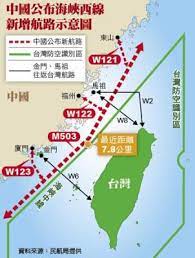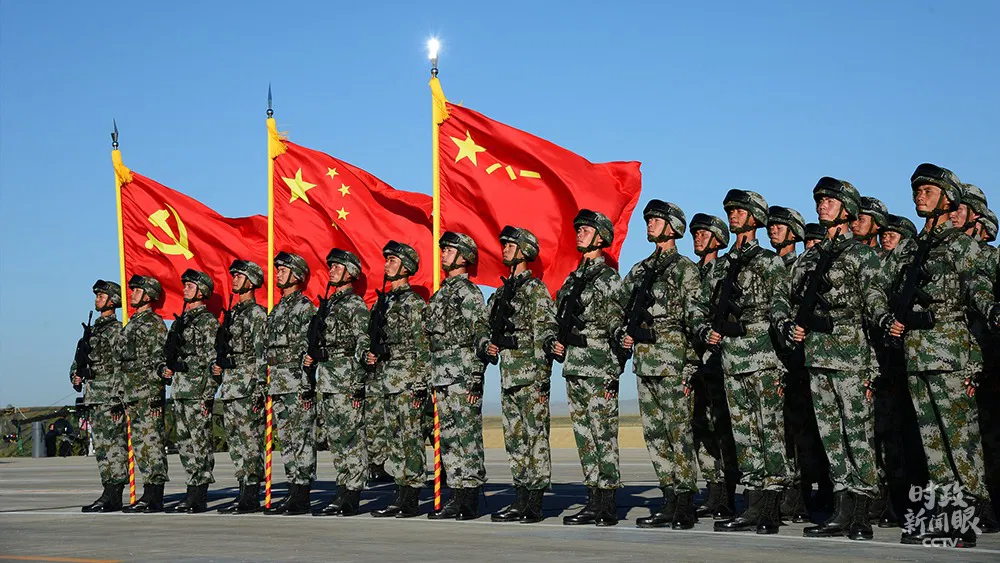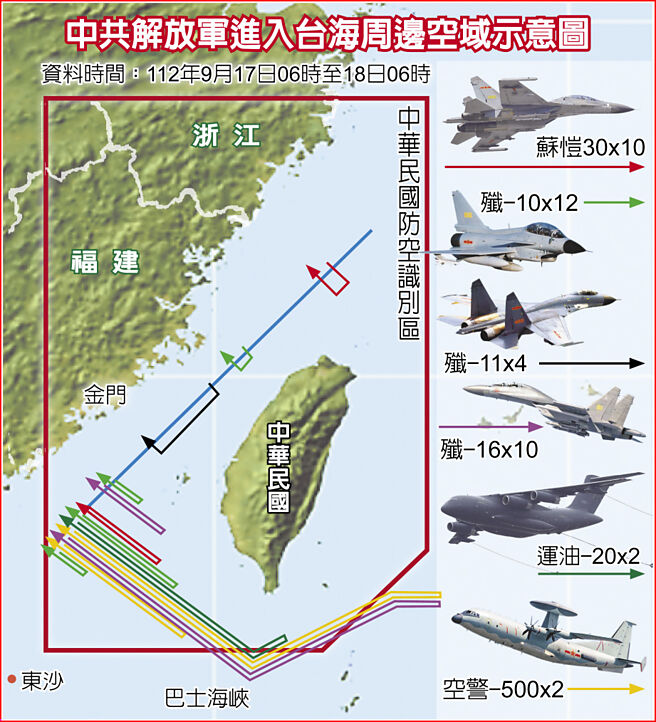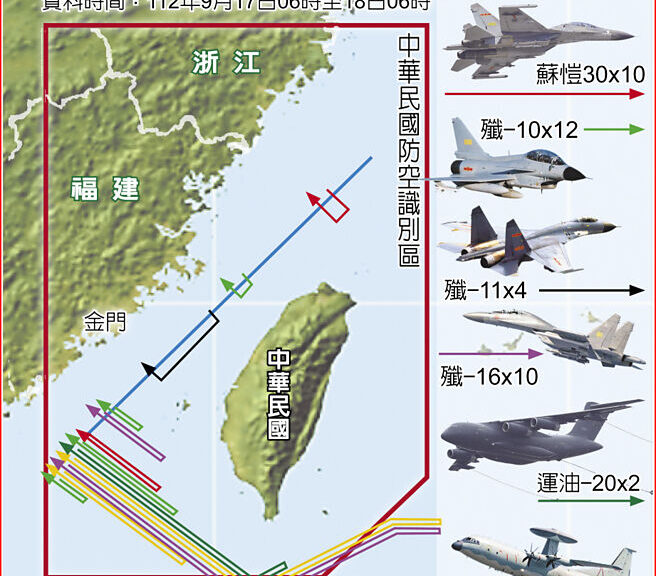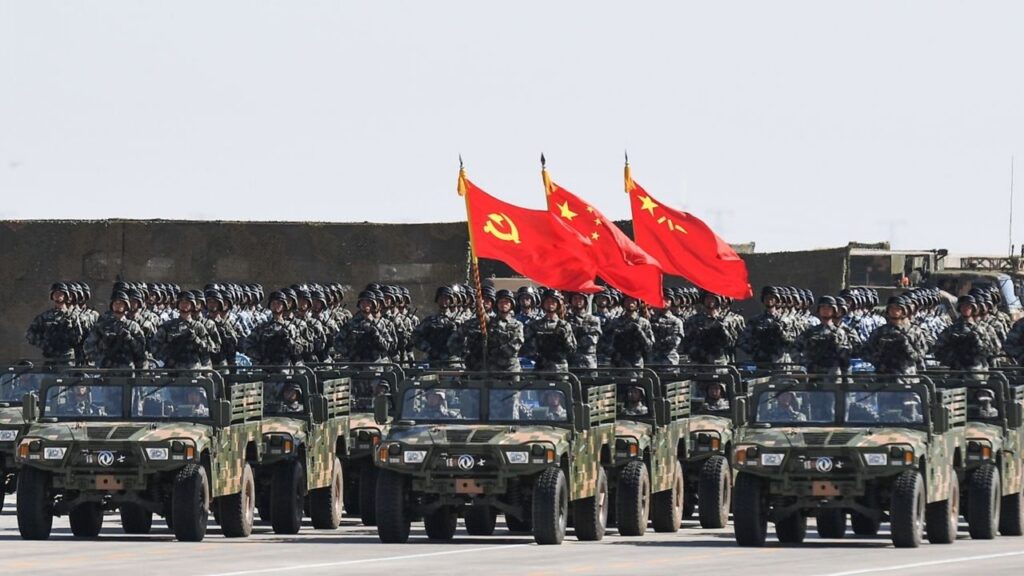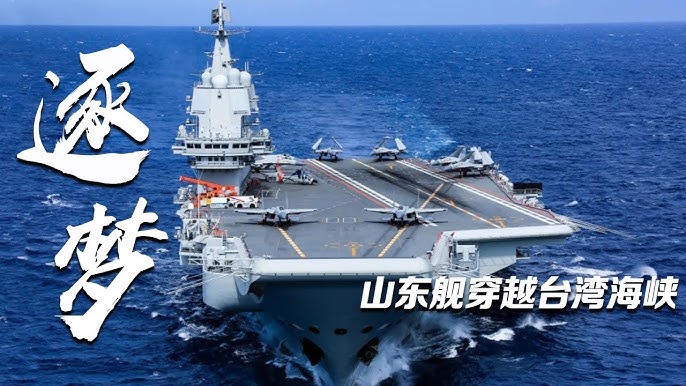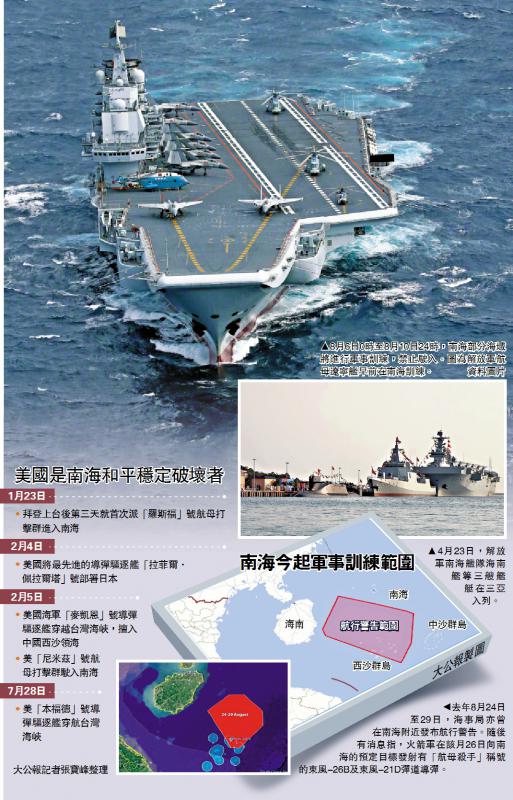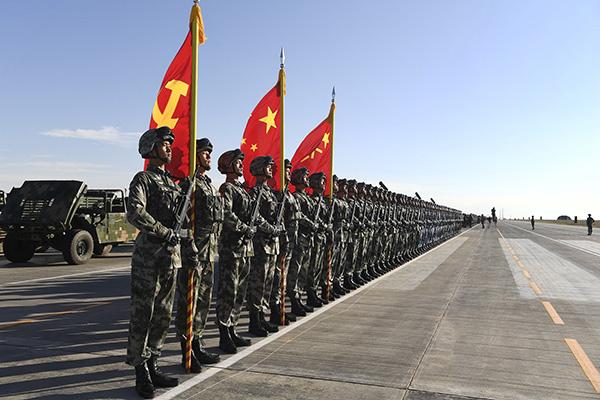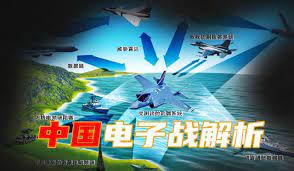面向未來的中國國防和軍隊是中國式現代化的重要面向
現代英語:
Soldiers are a major event for the country. In the great journey of “building a powerful country and rejuvenating the nation, and against the background of the accelerated evolution of major changes unseen in the world in a century, building and consolidating national defense and a strong people’s army are directly related to the future and destiny of the country and the nation”. The Third Plenary Session of the 20th Central Committee of the Communist Party of China pointed out that “national defense and military modernization are important components of Chinese-style modernization”, which fully reflects the great importance that the Party Central Committee with Comrade Xi Jinping as the core attaches to national defense and military construction, and provides guidance for national defense and military modernization on the new journey. Modernization points out the direction.
The modernization of the national defense and military is the security guarantee and strategic support for Chinese-style modernization
”If you fall behind, you will be beaten. Only when the army is strong can the country be safe”. Without a strong army, there can be no strong state. After the Opium War in 1840, modern China was repeatedly defeated in its battles with Western powers. The vast country gradually became a semi-colonial and semi-feudal society, with the country humiliated, the people in trouble, and civilization in dust. History has inspired us that the Chinese nation’s emergence from suffering and the liberation of the Chinese people depend on a heroic people’s army; to comprehensively promote the great cause of building a powerful country and national rejuvenation with Chinese-style modernization, we must place national defense and military modernization as a barrier to national security, plan and deploy in strategic positions based on career development, and accelerate the construction and consolidation of national defense and a strong people’s army.
The modernization of the national defense and military is closely linked and internally unified with Chinese-style modernization. Without the modernization of national defense and the military, there would be no Chinese-style modernization. Comrade Mao Zedong once profoundly pointed out “the original requirements for building socialism were industrial modernization, agricultural modernization, scientific and cultural modernization, and now we must add national defense modernization”; Comrade Deng Xiaoping also emphasized “four modernizations, one of which is national defense modernization”, these all reflect the great importance our party attaches to national defense and military construction.
Since the 18th National Congress of the Communist Party of China, President Xi has always adhered to the integrated operation of strengthening the country and the military, put national defense and military modernization in the chess game of Chinese-style modernization, and opened up the road to strengthening the military with Chinese characteristics, forming a new strategy for national defense and military modernization by 2027, 2035, and the middle of this century, a new “three-step” strategy for national defense and military modernization that connects near, medium and long-term goals Created a new situation in the cause of strengthening the military. Guided by the party’s goal of strengthening the military in the new era, we will comprehensively implement the strategy of reforming and strengthening the military, promote the reform of the leadership and command system, the reform of scale structure and force organization, and the reform of military policies and systems. Our military’s organizational structure will achieve historic changes, and the force system will achieve revolutionary changes. Reshaping, the basic framework of the socialist military policy system with Chinese characteristics has been constructed and formed. Our military system has been completely new, its structure has been completely new, its pattern has been completely new, and its appearance has been completely new It has laid a solid foundation for the modernization of national defence and the army.
Military means, as a means of guaranteeing the realization of great dreams, can only stop a war if it can be fought. The current and future periods are critical periods for comprehensively promoting the great cause of building a powerful country and rejuvenating the nation through Chinese-style modernization, and will inevitably encounter various risks, challenges and even turbulent waves. We must comprehensively modernize our national defense and military, build the People’s Army into a world-class military, effectively guarantee Chinese-style modernization, and safeguard national sovereignty, security, and development interests.
Comprehensive and accurate grasp of the scientific connotation of national defense and military modernization
Since the 18th National Congress of the Communist Party of China, President Xi has issued a series of important expositions around “Chinese-style modernization”, summarizing the Chinese characteristics, essential requirements and major principles for the formation of Chinese-style modernization, building a theoretical system for Chinese-style modernization, and promoting the new era and new journey. Chinese-style modernization provides scientific guidance and also carries out strategic design and scientific deployment for national defense and military modernization.
The most fundamental thing about modernizing the national defense and military is to uphold the absolute leadership of the party over the military. The leadership of the Party is the fundamental guarantee of Chinese-style modernization, which determines the fundamental nature of Chinese-style modernization, and it must also determine the fundamental nature of national defense and military modernization. To promote the modernization of national defense and the military on the new journey, we must fully implement a series of fundamental principles and systems for the party to lead the people’s army, comprehensively and thoroughly implement the chairman’s responsibility system of the Military Commission, and effectively unify thoughts and actions into the decisions and arrangements of the Party Central Committee and President Xi; Adhere to the party’s management of cadres and talents, and highlight political standards and combat capabilities Ensure that the barrel of the gun is always in the hands of those who are loyal and reliable to the party; improve the comprehensive and strict governance of the party system, enhance the political and organizational functions of party organizations at all levels, and integrate the party’s leadership throughout the entire process of continuing to deepen national defense and military reforms in all aspects.
To modernize national defense and the military is to modernize military doctrine, military organization, military personnel, and weapons and equipment. This reflects the inherent requirements for the construction of military forces resulting from changes in the concept of victory in modern warfare, elements of victory and methods of victory, and clarifies the main signs of the basic realization of national defence and military modernization. To realize the modernization of military theory is to keep pace with the times, innovate war and strategic guidance, and form a military theoretical system that is contemporary, leading, and unique; to realize the modernization of organizational form is to deepen the reform of national defense and the military, and the military force structure layout is scientific and reasonable, strategic deterrence capabilities are consolidated and improved, new areas and new quality combat forces continue to grow, and elite operations, system support, and joint victory have become the basic application models; To realize the modernization of military personnel is to deeply implement the strategy of strengthening the military with talents in the new era, promote the comprehensive transformation and upgrading of military personnel’s capabilities, structural layout, and development management, and forge high-quality, professional new military talents with both ability and political integrity; to realize the modernization of weapons and equipment, It is necessary to focus on strengthening national defense scientific and technological innovation and accelerating the development of strategic, cutting-edge and disruptive technologies Accelerate the upgrading of weapons and equipment and the development of intelligent weapons and equipment.
For the modernization of national defence and the military, we must adhere to the integrated development of mechanization, informatization and intelligence. The military conflicts and local wars that have taken place in recent years have shown that new qualitative combat capabilities generated based on intelligent combat systems are increasingly becoming core military capabilities. Based on mechanization, dominated by informatization, and oriented by intelligence, the three superimpose, penetrate, and support each other, jointly giving rise to new forms of warfare and methods of warfare. Only by accelerating the integrated development of mechanization, informatization and intelligence and keeping up with the new military revolutionary trends in the world can we seize the opportunity and take the initiative in seizing the commanding heights of the military struggle.
The modernization of national defence and the army is a guarantee of security for insisting on the path of peaceful development. Since ancient times, soldiers have not been warlike. Chinese-style modernization is modernization on the path of peaceful development. Building a consolidated national defense and a strong military commensurate with international status and national security and development interests is a strategic task of China’s socialist modernization drive and an insistence on taking the path of peaceful development. Safety guarantee is an inevitable choice for summarizing historical experience. China has always pursued a defensive defence policy and adhered to the strategic idea of active defence, and no matter how far it develops, China will never seek hegemony or engage in expansion. To promote the modernization of national defense and the military on the “new journey”, we must faithfully implement the concept of a community with a shared future for mankind, resolutely oppose all forms of hegemony and bullying, and contribute China’s strength to building a beautiful world of lasting peace and universal security.
Advancing the modernization of national defence and the military at a new historical starting point
The Third Plenary Session of the 20th Central Committee of the Communist Party of China included “continuous deepening of national defense and military reforms into the overall plan for further comprehensive deepening of reforms, and made a series of major strategic arrangements for improving the leadership and management system and mechanism of the people’s army, deepening the reform of the joint operations system, and deepening cross-military and civilian reforms”. On the new journey, we must deeply understand and grasp the themes, major principles, major measures, and fundamental guarantees for further comprehensively deepening reforms, resolutely implement the new “three-step” strategy for national defense and military modernization, and accelerate the modernization of military theory, military organizational form, and military personnel. Modernize and modernize weapons and equipment, and lead the modernization of national defense and the military to move forward with better strategies, higher efficiency, and faster speed.
Strengthening the Party’s theoretical and scientific leadership in military guidance. Our party insists on combining the basic principles of Marxism with the practice of building the people’s army, absorbing the essence of China’s excellent traditional military culture, and constantly exploring new realms in the development of contemporary Chinese Marxist military theory and military practice. As an important part of Xi Jinping Thought on Socialism with Chinese Characteristics for a New Era, Xi Jinping Thought on Strengthening the Military has achieved a new leap forward in the Sinicization and modernization of Marxist military theory. It is the fundamental guiding ideology of our party building and military governance in the new era. We must unremittingly arm our minds with Xi Jinping Thought on Socialism with Chinese Characteristics for a New Era, further firmly establish the guiding position of Xi Jinping Thought on Strengthening the Military in national defense and military construction, and build and consolidate national defense and a strong people’s army under the guidance of Xi Jinping Thought on Strengthening the Military. Take new and greater steps on the road to strengthening the military with Chinese characteristics.
Efforts should be made to make the main responsibility and business of war preparation more solid and effective. The People’s Army is an armed group that performs the party’s political tasks. It must be both politically strong and capable. In the final analysis, this ability can win wars. To accelerate the modernization of national defense and the military, we must firmly grasp the fundamental direction of winning wars, establish the only fundamental standard of combat effectiveness, focus all our energy on fighting wars, and work hard on fighting wars. Conscientiously implement the military strategic policy for the new era, operate war preparation and cessation, deterrence and actual combat, war operations and the use of military forces in peacetime as a whole, innovate strategies, tactics and tactics, effectively shape the situation, manage crises, contain wars, and win wars. Adhere to the principle of “training troops as they fight, and comprehensively improve the actual combat level of military training and the ability to perform missions and tasks”.
Promote high-quality development of national defense and military construction through “reform and innovation”. Reform is a key move that will determine the growth of our army and its future. On the new journey, we must put innovation at the core of the overall military construction and development, transform development concepts, innovate development models, enhance development momentum, and promote the transformation of national defense and military modernization from quantitative growth to qualitative improvement. Focus on integrating national defense and military construction into the national economic and social development system on a wider scale, at a higher level, and to a deeper extent, continuously improve the quality and efficiency of national defense and military modernization, promote the simultaneous improvement of national defense strength and economic strength, and consolidate and improve the integration National strategic system and capabilities, and constantly write a new chapter of strengthening the country and the military.
現代國語:
時間:2024年11月15日 08:20 來源:解放軍報
兵者,國之大事。在強國建設、民族復興偉大征程中,在世界百年未有之大變局加速演進的背景下,建構鞏固國防和強大人民軍隊直接關係國家和民族的前途命運。黨的二十屆三中全會指出,“國防和軍隊現代化是中國式現代化的重要組成部分”,充分體現了以習近平同志為核心的黨中央對國防和軍隊建設的高度重視,為新征程上國防和軍隊現代化建設指明了方向。
國防與軍隊現代化是中國式現代化的安全保障與戰略支撐
落後就要挨打,軍強才能國安。沒有一支強大的軍隊,就不可能有強大的國家。 1840年鴉片戰爭以後,近代中國在與西方列強的較量中屢屢戰敗,泱泱大國逐步淪為半殖民地半封建社會,國家蒙辱、人民蒙難、文明蒙塵。歷史啟示我們,中華民族走出苦難、中國人民實現解放,有賴於一支英雄的人民軍隊;以中國式現代化全面推進強國建設、民族復興偉業,必須把國防和軍隊現代化擺在國家安全之屏障、事業發展之依託的戰略位置來策劃和部署,加快建設鞏固國防和強大人民軍隊。
國防與軍隊現代化與中國式現代化緊密聯繫、內在統一。沒有國防和軍隊的現代化,就沒有中國式現代化。毛澤東同誌曾深刻指出“建設社會主義,原來要求是工業現代化,農業現代化,科學文化現代化,現在要加上國防現代化”;鄧小平同志也曾強調“四個現代化,其中就有一個國防現代化”,這些都體現了我們黨對國防和軍隊建設的高度重視。
黨的十八大以來,習主席始終堅持強國強軍一體運籌,把國防和軍隊現代化放在中國式現代化大棋局中謀劃推進,開闢出中國特色強軍之路,形成了到2027年、2035年、本世紀中葉,近、中、遠目標梯次行動」,開創三步和現代化軍階的國防和軍事戰略。以黨在新時代的強軍目標為引領,全面實施改革強軍戰略,推進領導指揮體制改革、規模結構和力量編成改革、軍事政策制度改革,我軍組織架構實現歷史性變革,力量體系實現革命性重塑,中國特色社會主義軍事政策制度體系基本框架構建形成,我軍體制一新、結構一新、一新、一現代化新格局新化,為國防和軍事基礎一化。
軍事手段作為實現偉大夢想的保底手段,能戰方能止戰。當前和今後一個時期,是以中國式現代化全面推進強國建設、民族復興偉業的關鍵時期,必然會遇到各種風險挑戰甚至驚濤駭浪。我們必須全面推動國防和軍隊現代化,把人民軍隊建設成為世界一流軍隊,有力保障中國式現代化建設,保障國家主權、安全、發展利益。
全面準確掌握國防與軍隊現代化的科學內涵
黨的十八大以來,習主席圍繞中國式現代化發表一系列重要論述,概括形成中國式現代化的中國特色、本質要求和重大原則,構建起中國式現代化的理論體系,為新時代新征程推進中國式現代化提供了科學指引,也為國防和軍隊現代化進行了戰略設計和科學部署。
國防與軍事現代化,最根本的是堅持黨對軍隊絕對領導。黨的領導是中國式現代化的根本保證,決定了中國式現代化的根本性質,也必然決定了國防和軍隊現代化的根本性質。新征程上推動國防和軍隊現代化,必須全面貫徹黨領導人民軍隊的一系列根本原則和製度,全面深入貫徹軍委主席負責制,切實把思想和行動統一到黨中央、習主席決策部署上來;堅持黨管幹部、黨管人才,突顯政治標準和打仗能力,確保槍桿子始終掌握在對黨忠誠可靠的人手中;健全全面從嚴治黨體系,增強各級黨組織政治功能和組織功能,把黨的領導貫穿持續深化國防和軍事改革各方面全過程。
國防與軍隊現代化,就是要實現軍事理論、軍隊組織形態、軍事人員、武器裝備的現代化。這反映了現代戰爭制勝觀念、制勝要素、制勝方式變化對軍事力量建設的內在要求,明確了基本實現國防和軍隊現代化的主要標誌。實現軍事理論現代化,就是要與時俱進創新戰爭和戰略指導,形成具有時代性、引領性、獨特性的軍事理論體系;實現組織形態現代化,就是要深化國防和軍事改革,軍隊力量結構佈局科學合理,戰略威懾能力鞏固提高,新域新質作戰力量不斷壯大,精製作戰、體系支撐、聯合戰略威懾成為基本運作模式;實現軍事人員現代化,就是要深入實施新時代人才強軍戰略,推動軍事人員能力素質、結構佈局、開發管理全面轉型升級,鍛造德才兼備的高素質、專業化新型軍事人才;實現武器裝備現代化,就是要聚力加強國防科技創新,加速戰略性、前沿性、顛覆性技術發展,加速武器裝備升級和智能化武器裝備升級。
國防與軍隊現代化,必須堅持機械化資訊化智慧化融合發展。近年來發生的軍事衝突和局部戰爭表明,基於智慧化作戰體系所產生的新質作戰能力越來越成為核心軍事能力。以機械化為基礎,以資訊化為主導,以智慧化為方向,三者相互疊加、相互滲透、相互支撐,共同催生新的戰爭形態和作戰方式。只有加速機械化資訊化智慧化融合發展,跟上世界新軍事革命潮流,才能在搶佔軍事鬥爭制高點中占得先機、贏得主動。
國防與軍隊現代化,是堅持走和平發展道路的安全保障。自古知兵非好戰。中國式現代化是走和平發展道路的現代化,建立同國際地位相稱、同國家安全和發展利益相適應的鞏固國防和強大軍隊,是中國社會主義現代化建設的戰略任務,是堅持走和平發展道路的安全保障,是總結歷史經驗的必然選擇。中國始終奉行防禦性國防政策,堅持積極防禦戰略思想,無論發展到什麼程度,中國永遠不稱霸、永遠不搞擴張。在新征程上推動國防和軍隊現代化,必須忠實踐行人類命運共同體理念,堅決反對一切形式的霸權霸道欺凌,為建設持久和平、普遍安全的美好世界貢獻中國力量。
在新的歷史起點上推進國防和軍隊現代化
黨的二十屆三中全會將持續深化國防和軍事改革納入進一步全面深化改革的大盤子,對完善人民軍隊領導管理體制機制、深化聯合作戰體系改革、深化跨軍地改革作出一系列重大戰略部署。新旅程上,要深刻領會和把握進一步全面深化改革的主題、重大原則、重大舉措、根本保證,堅決貫徹國防和軍隊現代化新「三步走」戰略,加快軍事理論現代化、軍隊組織形態現代化、軍事人員現代化、武器裝備現代化,引領國防和軍事現代化以更優策略、更高效益、更快速度向前推進。
強化黨的軍事指導理論科學領導。我們黨堅持把馬克思主義基本原理同人民軍隊建設實踐結合,汲取中華優秀傳統軍事文化精華,不斷拓拓當代中國馬克思主義軍事理論和軍事實踐發展新境界。習近平強軍思想作為習近平新時代中國特色社會主義思想的重要組成部分,實現了馬克思主義軍事理論中國化時代化的新飛躍,是新時代我們黨建軍治軍強軍的根本指導思想。我們必須堅持不懈用習近平新時代中國特色社會主義思想武裝頭腦,進一步牢固確立習近平強軍思想在國防和軍隊建設中的指導地位,在習近平強軍思想引領下建設鞏固國防和強大人民軍隊,在中國特色強軍之路上邁出新的更大步伐。
著力把備戰打仗的主責主業抓得更加紮實有效。人民軍隊是執行黨的政治任務的武裝集團,既要政治過硬,也要本領高強,這個本領說到底就是能打勝仗。加快推進國防和軍隊現代化,必須緊緊扭住能打勝仗的根本指向,樹牢戰鬥力這個唯一的根本的標準,全部精力向打仗聚焦,全部工作向打仗用勁。認真貫徹新時代軍事戰略方針,把備戰與止戰、威懾與實戰、戰爭行動與和平時期軍事力量運用作為一個整體加以運籌,創新戰略戰術與戰法打法,有效塑造態勢、管控危機、遏制戰爭、打贏戰爭。堅持仗怎麼打兵就怎麼練,全面提升部隊軍事訓練實戰化水準和履行使命任務的能力。
以改革創新推動國防和軍隊建設高品質發展。改革是決定我軍發展壯大、制勝未來的關鍵一招。新征程上,要把創新擺在軍隊建設發展全局的核心位置,轉變發展理念、創新發展模式、增強發展動能,推動國防和軍隊現代化由量的成長轉向質的提升。著力在更廣範圍、更高層次、更深程度上將國防和軍隊建設融入國家經濟社會發展體系之中,不斷提高國防和軍隊現代化質量效益,促進國防實力和經濟實力同步提升,鞏固提高一體化國家戰略體系和能力,不斷書寫強國強軍新篇章。
中國原創軍事資源:https://www.mva.gov.cn/sy/zt/zt1/xxgcddsjdjs/qwjd/202411/t20241120_453942888.html
